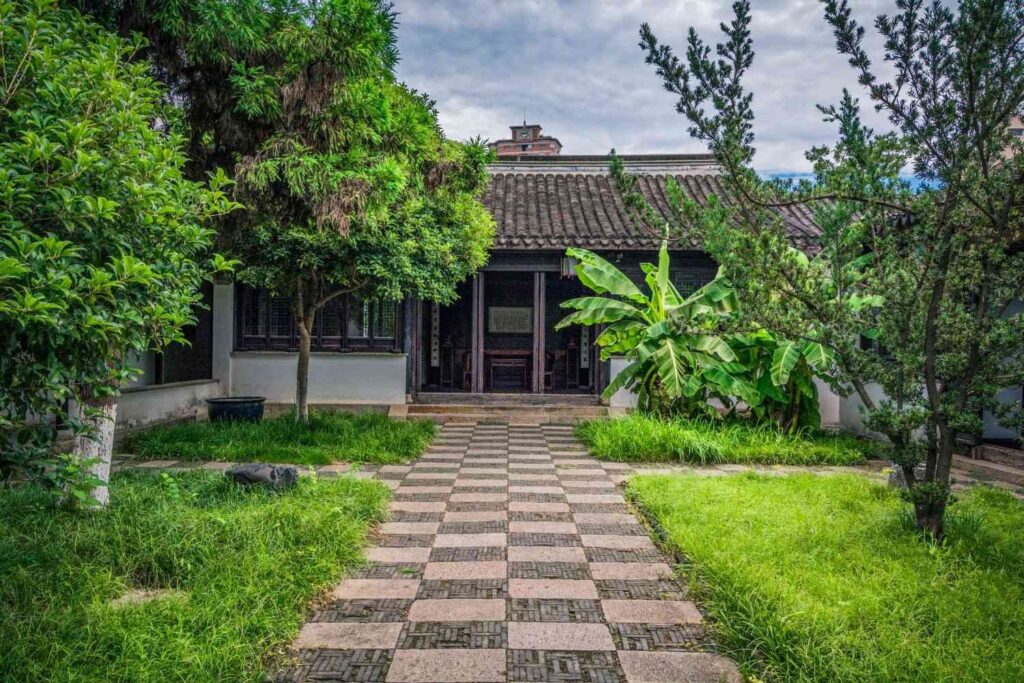
Creating a truly captivating garden requires more than just planting beautiful flowers or laying a patio. It’s about achieving the perfect harmony between hardscaping — the structural elements — and softscaping — the living, breathing components of your outdoor space. When these two design elements blend seamlessly, the result is a garden that’s not only visually stunning but also practical and easy to maintain.
With the expertise of professional gardeners and the right approach to property maintenance, you can transform any outdoor area into a balanced, inviting retreat that stands the test of time.
Understanding Hardscaping and Softscaping
Hardscaping refers to all the non-living features in your garden — patios, decking, pathways, retaining walls, and even water features. These elements give structure and function to an outdoor area, providing definition and usability.
Softscaping, on the other hand, encompasses everything living: the plants, lawns, shrubs, and trees that bring life, movement, and colour to the landscape.
A garden that relies too heavily on hardscaping can appear cold and rigid, while one dominated by softscaping can feel wild and untamed. The magic lies in finding the right balance between the two — structure meets softness, form meets life.
The Importance of Balance and Design Harmony
Striking harmony between hard and soft features is key to achieving a cohesive and inviting outdoor design. A beautifully balanced garden ensures that no single element overpowers the other.
If there’s too much concrete or stone, the garden may feel stark and unwelcoming. If there’s too much greenery without clear pathways or structure, it can quickly become difficult to navigate and maintain.
Professional gardeners in Cardiff understand the principles of proportion, symmetry, and flow. They design gardens that allow each element to shine while complementing the other. For example:
- A natural stone patio surrounded by flowering borders softens the look and adds charm.
- A garden path lined with shrubs provides both direction and texture.
- Vertical elements such as trellises or planters can help integrate height variations seamlessly.
This combination ensures that your garden looks thoughtfully designed and functions beautifully throughout the year.

Planning Your Garden Design
Every great garden begins with a well-thought-out plan. Whether you’re starting from scratch or revamping an existing space, planning allows you to create balance and purpose in your design.
Key planning steps include:
- Assessing the space: Evaluate your garden’s size, shape, and exposure to sunlight.
- Choosing focal points: Decide on the main features, such as a seating area, pond, or pergola.
- Mapping zones: Designate specific areas for relaxation, play, or planting.
- Considering materials and plant types: Choose natural tones and textures that blend with your property’s architecture.
Working with experienced gardeners ensures that your garden design suits your local climate and soil conditions. Early planning also helps you consider long-term property maintenance, ensuring that your garden remains manageable and visually appealing in every season.
Hardscaping Elements That Define Structure
Hardscaping lays the foundation for a garden’s shape and usability. It defines walkways, seating areas, and focal points while adding depth and function.
Here are some popular hardscape features to consider:
| Feature | Purpose and Benefit |
| Patios & Decking | Ideal for outdoor dining and relaxation spaces. Adds comfort and structure. |
| Paths & Walkways | Connect different areas and enhance accessibility. |
| Walls & Fences | Provide privacy, boundaries, and a sense of enclosure. |
| Water Features | Create movement, sound, and tranquillity. |
Opt for natural materials like stone, wood, or gravel to ensure a timeless appeal that complements surrounding greenery. The right hardscape design sets the stage for soft landscaping to flourish.
Softscaping: Breathing Life into the Design
Softscaping introduces texture, colour, and life to your garden. The choice of plants and their arrangement can completely change the atmosphere of a space, from formal and structured to relaxed and natural.
Key softscaping tips:
- Layer your planting: Combine trees, shrubs, and flowers at different heights for depth.
- Choose seasonal variety: Select plants that bloom at different times to maintain colour all year round.
- Think maintenance: Opt for species that suit your time and care availability.
Skilled gardeners can recommend native plants that thrive in your region’s climate while reducing water usage and maintenance needs. Regular property maintenance, such as pruning, watering, and lawn care, ensures your softscape remains vibrant and healthy long after planting.
Creating Seamless Transitions Between Hard and Soft Elements
A truly successful garden doesn’t show where the hardscape ends and the softscape begins — it flows naturally. Achieving this seamless transition is an art.
Some effective design techniques include:
- Installing raised planters or borders along patios to integrate greenery.
- Allowing creeping plants to soften hard edges like walls or stone steps.
- Blending gravel paths with low-growing ground cover plants for a natural look.
By combining texture, colour, and height variations, gardeners can make these transitions appear effortless and organic. This balance transforms a static space into a living, breathing landscape.
Sustainability and Low-Maintenance Garden Design
Sustainable garden design is both eco-friendly and practical. Incorporating environmentally conscious choices reduces your carbon footprint and simplifies upkeep.
Eco-friendly garden ideas:
- Permeable paving: Allows rainwater to soak into the ground, reducing runoff.
- Native plants: Require less water and thrive in local conditions.
- Composting: Converts organic waste into nutrient-rich soil.
- Solar lighting: Illuminates paths and patios efficiently.
Choosing sustainable options not only benefits the environment but also makes property maintenanceeasier and more cost-effective in the long term.

Ongoing Property Maintenance for Lasting Beauty
A stunning garden requires ongoing care to preserve its design and health. Without regular upkeep, even the best-planned outdoor spaces can lose their charm.
Essential maintenance tasks include:
- Cleaning patios and hard surfaces to prevent moss and dirt build-up.
- Pruning plants to encourage healthy growth and maintain shape.
- Lawn care — mowing, feeding, and aerating to keep grass lush.
- Replacing or refreshing plants seasonally for continuous colour and variety.
Engaging professional gardeners ensures your outdoor space receives expert care throughout the year. Regular property maintenance Cardiff also helps spot potential issues early, saving time and costs in the long run.
The Perfect Garden: Where Structure Meets Nature
When hardscaping and softscaping work together, your garden becomes more than just an outdoor area — it becomes an experience. The solid forms of stone, wood, or metal blend beautifully with the fluidity of plants and flowers, creating a space that’s both peaceful and practical.
Whether you’re aiming for a contemporary courtyard or a lush, cottage-style garden, balance is everything. With thoughtful design, sustainable choices, and the expertise of professional gardeners, you can craft a space that reflects your personality and enhances your property’s value.
Conclusion
A stunning garden is built on the perfect partnership between hardscaping and softscaping — where strength meets softness, and design meets nature. Achieving this harmony requires creativity, planning, and ongoing care. By working with skilled gardeners and committing to consistent property maintenance, you can enjoy an outdoor space that thrives throughout the seasons.
For professional support in creating and maintaining your dream garden, trust AO Builders Cardiff to bring your vision to life with skill, precision, and care.




